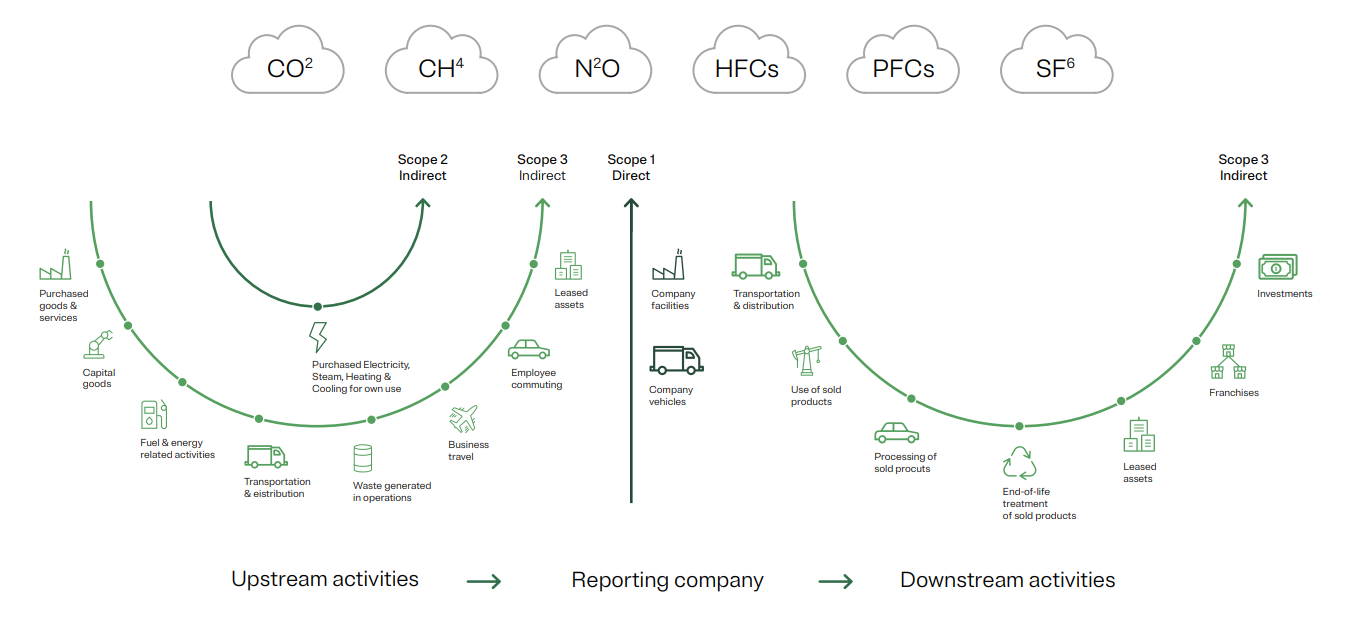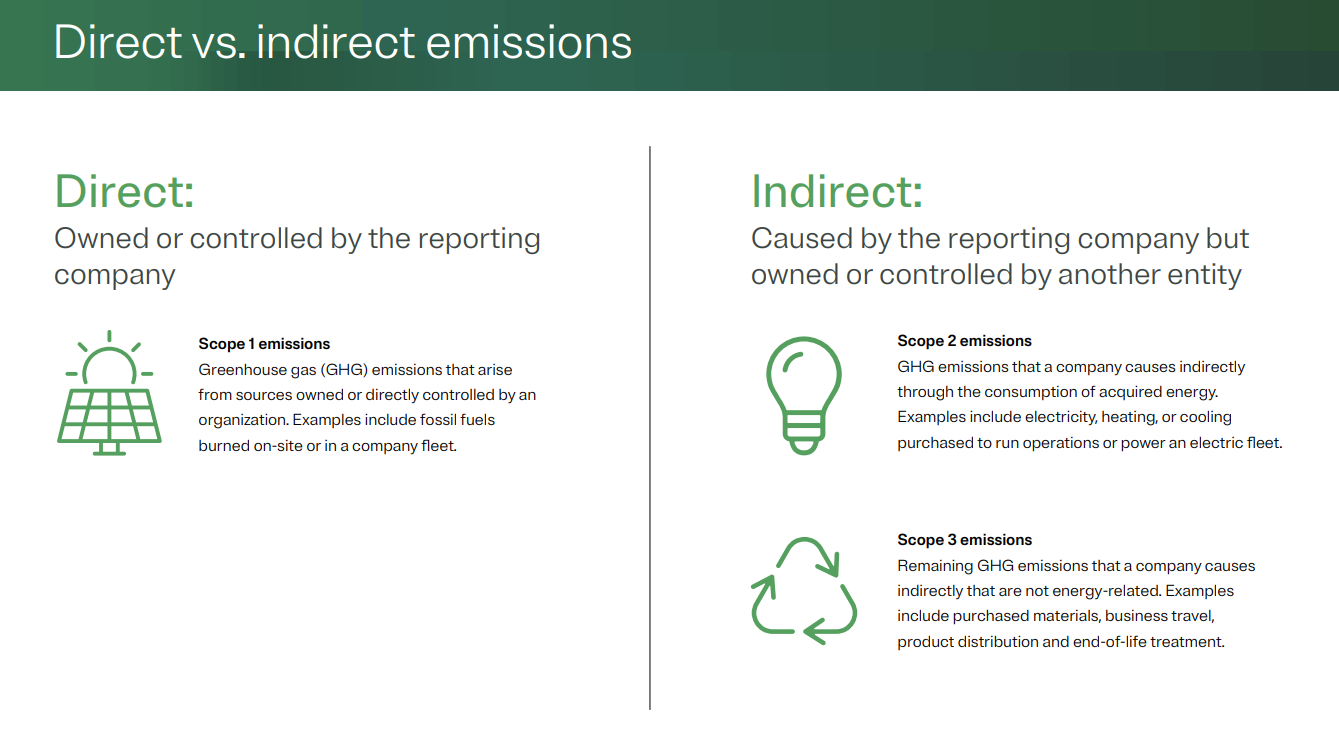GHG REDUCTION Toolkit
Green House Gases of Small & Medium Enterprises (SMEs)
SMEs generate Green House Gas (GHG) emissions from various sources, including the production and transportation of goods, energy use in stores and warehouses, and waste management. This toolkit aims to help you understand how to reduce your emissions and influence positive industry-wide change.
Green House Gases (GHG)
Greenhouse gases (GHGs) are naturally occurring gases present in the Earth’s atmosphere that absorb and emit radiation within the thermal infrared range, leading to the greenhouse effect. Water vapor, carbon dioxide, methane, and ozone are the main GHGs, which are necessary to regulate the Earth’s temperature. However, human activities such as burning fossil fuels, deforestation, and agriculture have increased the concentration of GHGs in the atmosphere, resulting in global warming and negative impacts on the environment and human health.
Global warming caused by the increase in GHG concentration can lead to more frequent and severe weather events, rising sea levels, and health problems. Therefore, reducing GHG emissions is crucial to mitigate the negative impacts of global warming. It is essential to take steps such as transitioning to renewable energy sources, improving energy efficiency, and adopting sustainable practices in agriculture and forestry to reduce GHG emissions and mitigate the effects of climate change.
Sector by sector: where do global greenhouse gas emissions come from? – Our World in Data
Case Studies
- Saving Energy from the Office Walls to the Plant Floor
- Energy Efficiency Helps Sawmill Stay on the Cutting Edge
- Energy Efficiency Training from the Comfort of Home
Watch the videos below for more information.
What Are Scope 1, 2, & 3 Emissions?
How Can SMEs Reduce Greenhouse Emissions
Production, transportation, and distribution of goods can all contribute to greenhouse gas emissions. Additionally, heating and lighting used in facilities operations can also add to this.
SMEs can reduce greenhouse gas emissions in several ways:
- Optimize production processes to reduce emissions from the manufacture of goods.
- Increase the efficiency of transportation to reduce emissions from the movement of goods.
- Streamline distribution networks to reduce emissions from the delivery of goods.
- Increase the efficiency of facilities heating and lighting systems.
- Reduce the amount of energy used to power facilities operations.
- Utilize renewable energy sources to power facilities operations.
- Invest in energy-efficient technologies.
GHG Through Transportation
Transportation is a major contributor to greenhouse gas emissions, with vehicles releasing primarily carbon dioxide into the atmosphere due to burning fossil fuels. Transportation is a major source of GHG emissions, and the growing number of vehicles on the road contributes to the rise.
The transportation sector can reduce greenhouse gas emissions in several ways:
- Use more fuel-efficient vehicles: Choosing vehicles that consume less fuel can significantly reduce GHG emissions from transportation.
- Use alternative modes of transportation: Public transit, walking, or cycling instead of driving can greatly reduce GHG emissions.
- Promote the use of electric and hybrid vehicles: Electric and hybrid vehicles produce fewer GHGs than traditional gasoline-powered vehicles. Encouraging the use of these vehicles can help reduce GHG emissions.
- Implement fuel-efficient driving practices: Simple changes in driving habits, such as gentle acceleration and braking, can improve a vehicle’s fuel efficiency and reduce GHG emissions.
- Reduce the number of miles traveled by vehicles: Encouraging telecommuting and using mass transit can reduce the number of miles traveled by vehicles, which in turn reduces GHG emissions.
Additional Ways to Reduce GHG Emissions
Invest in Carbon Offset Projects: SMEs can invest in Carbon Offset Projects, such as reforestation or clean energy projects, to reduce their GHG emissions or remove carbon dioxide from the atmosphere.
Purchase Carbon Credits: SMEs can offset their GHG emissions by purchasing Carbon Credits from projects that have reduced GHG emissions.
Implement Energy Efficiency Measures: SMEs can reduce their GHG emissions by implementing energy efficiency measures in their stores and distribution centers, such as upgrading to energy-efficient lighting and appliances, sealing windows and doors to reduce heating and cooling losses, and optimizing heating, ventilation, and air conditioning systems.
Use Renewable Energy: To reduce their GHG emissions, SMEs can switch to renewable energy sources, such as solar or wind power.
Partner with Suppliers: SMEs can work with their suppliers to reduce GHG emissions in the production and transportation of goods, including using more fuel-efficient vehicles, implementing energy efficiency measures in production facilities, and sourcing raw materials from sustainable sources.

The Importance of Reducing Greenhouse Gases and Our Carbon Footprint
GHG emissions are a significant cause of climate change as they trap heat in the Earth’s atmosphere, leading to negative impacts such as heatwaves, sea level rise, and extreme weather events. Many countries have implemented policies and programs to reduce GHG emissions and mitigate their impact on the climate. It is crucial to continue these efforts to slow the rate of climate change and safeguard the environment and its inhabitants.
SMEs have a substantial role in carbon emissions, contributing through their supply chain, logistics operations, and energy consumption of stores and warehouses. By reducing carbon emissions, SMEs can help mitigate the impacts of climate change and enhance sustainability. Reducing carbon emissions also allows SMEs to save money on energy costs and improve their reputation with consumers who are increasingly conscious of the environmental impact of the products they purchase. Reducing GHG emissions is critical in limiting the magnitude of future warming and its associated impacts, which can have a severe effect on ecosystems, human communities, water resources, agriculture, human health, and coastal infrastructure.
Additional Links
- Innovations in Deep Energy Retrofits
- Emissions Reduction Through Wireless Switching
- Energy Efficient Alberta
- What is a Home Energy Audit?
- Residential Drain Water Heat Recovery Installation Captures Wasted Heat
- Residential Insulation Upgrade Saves Money
- Home Energy Audit Helps See Where Hot Air Leaks Out
- Home Energy Evaluation Shows Key Areas to Work on House
Contact Us
Want to Learn More? Get In Touch!
"*" indicates required fields
This project has been funded by Alberta Ecotrust Foundation




